
Yesterday was a brutally cold day with a gusty northwest wind buffeting us as we watched for birds at Lynde Shores Conservation Area in Whitby. We wondered if the Red-bellied Woodpecker (Melanerpes carolinus) was still harboring in the woods there, and sure enough, I heard his repeated chiff-chiff and rolling churrr before actually spotting the bird on a nearby tree trunk.
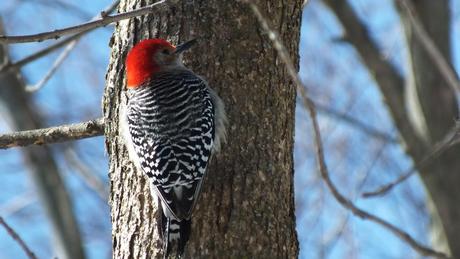
We were pleased that the sun was shining since it served to highlight the woodpecker’s plumage to a better advantage than the previous time we had sighted this bird. In particular, the striking black-and-white zebra-like barring on the back and wings really stood out against the gray bark of the tree trunk.

Lynde Shores Conservation Area is composed of various types of terrain, but the Red-bellied Woodpecker seems to favour the forested area next to the creek and accessible to the well-stocked bird feeders. Generous donors had the trays overflowing with peanuts in the shell.
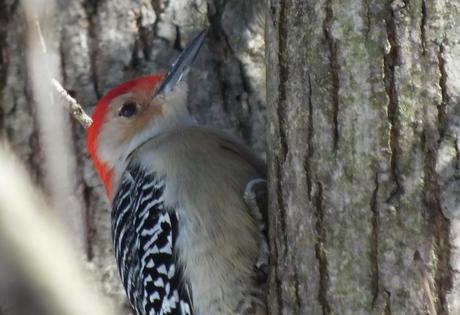
The Red-bellied Woodpecker is often mistaken for the Red-Headed Woodpecker, but it is the red suffusion on the belly that gives this woodpecker its name. It is hard to see in both sexes.

In this closeup of the woodpecker’s abdomen, the faint red colouring of the feathers is visible.
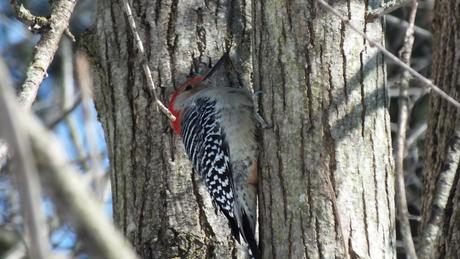
The woodpecker didn’t stay put on any one tree for long, seeming to switch between foraging for bugs in crevices of bark to gleaning peanuts from the bird feeder.
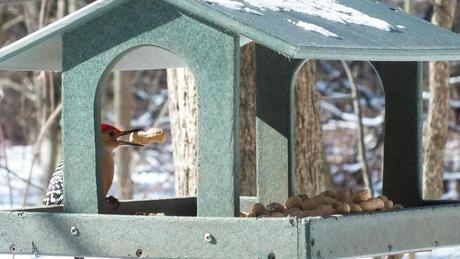
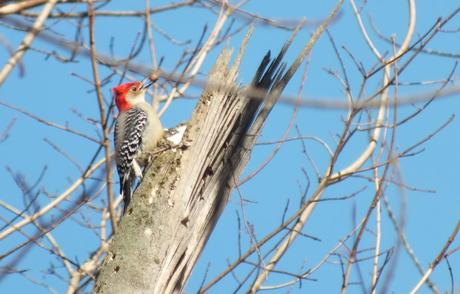
Here, we see the Red-bellied Woodpecker with one of his prizes that has now been shucked and is ready to eat. This broken off crag in a treetop seemed to be one of the woodpecker’s preferred perches. Perhaps he was able to lodge the peanut shell into the slits of wood where it would be held fast while the woodpecker broke it open.
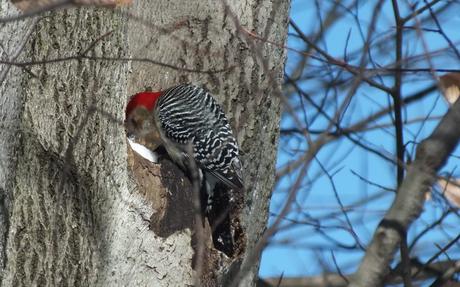
Seeing as there is no water available to drink in the nearby vicinity of the woods, with the creek being aptly frozen over, the woodpecker, and other birds we have witnessed, turn to eating snow or melting snow for refreshment. The woodpecker kept returning to this crotch in the tree trunk where snow had collected and was beginning to melt under the strong rays of the sun.
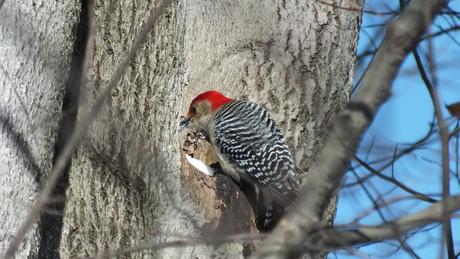
Numerous times, the woodpecker dipped his beak into the cavity and came up with his beak glistening with snow.
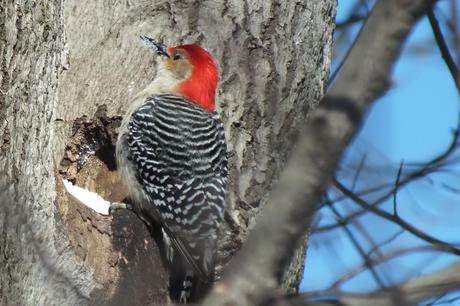
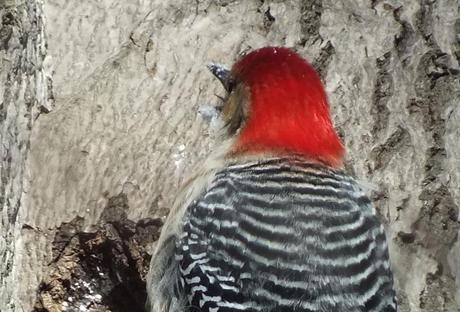
Take note of the woodpecker’s tongue in this picture. It is very fine.
In this video that Bob filmed you get a chance to watch the woodpecker eat the snow.
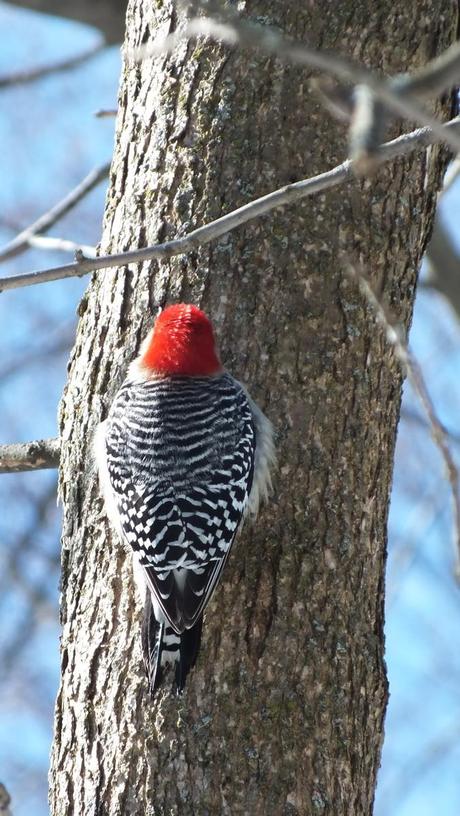
For a good half hour, Bob and I observed the comings and goings of the Red-bellied Woodpecker as it moved about the forest. It seemed quite undisturbed by the numbers of bird watchers. Numerous Downy Woodpeckers, Bluejays and Black-capped Chickadees also were plying the feeding stations while Eastern Wild Turkeys lurked in the underbrush.
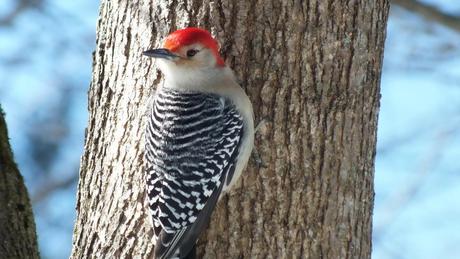
It really surprised Bob and I as to the flexibility of the woodpecker’s neck. It was capable of turning its head almost 180-degrees.
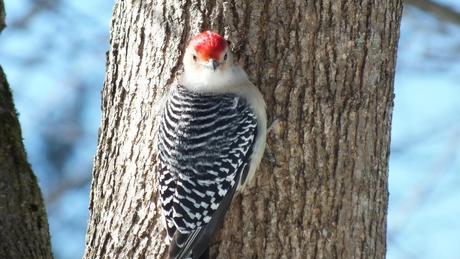
With a cold wind blowing out of the north, Bob filmed the Red-bellied Woodpecker catching some rays in an effort to warmup.
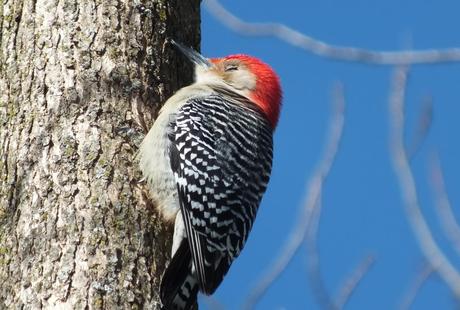
I guess the woodpecker was lulled by the warm rays of the sunshine much as we tried to remain bathed in its glow to try to offset the frigid polar air. It appeared that he might have a sleep…but no. The next thing we knew, it darted away into the distance.
Frame To Frame.ca

